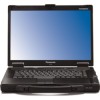Panasonic Toughbook 52 Mapping Technical and Operational Challenges of Mobile - Page 9
Hard costs Deployment costs, Soft costs Operational costs - price
 |
View all Panasonic Toughbook 52 manuals
Add to My Manuals
Save this manual to your list of manuals |
Page 9 highlights
One of the most striking misunderstandings in TCO is how little hard costs actually matter in the total cost of the deployment, yet price remains the leading product selection criteria among end users. However, the core idea behind TCO - to measure direct and indirect costs of an investment over time to determine its viability - is a sound and useful business concept. Having a full view of the cost of a mobile computing deployment over its lifetime provides insight into the type of solution that needs to be deployed. In particular, TCO analysis can show the significance in cost of mobile device failure. One of the most compelling aspects of this solution is the availability of a Web-based reporting tool and supporting analytic engine that makes information regarding what's happening on the retail floor available to other locations, including participating trading partners, providing a platform for item-level intelligence: VDC defines TCO to include the following components: • Hard costs (Deployment costs): hardware, accessories, software, implementation, and training costs • Soft costs (Operational costs): productivity loss, opportunity loss, and IT support, costs of repairs and replacement parts Easily quantified through supplier estimates, a majority of TCO analyses overly rely on hard costs. In fact, hard costs for a commercial-grade notebook only account for 18% of the deployment's TCO over a five year period. One of the most striking misunderstandings in TCO is how little hard costs actually matter in the total cost of the deployment, yet price remains the leading product selection criteria among end users. Hard/Deployment Costs Soft/Operational Costs Exhibit I-1 TCO Comparison Over Five Years Fully Rugged Notebook 34.0% 66.0% Rugged Notebook 29.2% 70.8% BusinessRugged Notebook 20.8% 79.2% Consumer Grade Notebook 18.2% 81.8% Soft costs make up the bulk of TCO and the greatest expenses in soft costs relate to lost productivity, IT expenses, and opportunity cost when a device fails. Annual device failures for non-rugged hardware can exceed 30%. This is a staggering figure considering that each percentage point of failure results in an increase of almost 5% in the mobile computing indirect or soft costs. © 2009 VDC Research Group, Inc. 8














